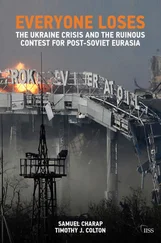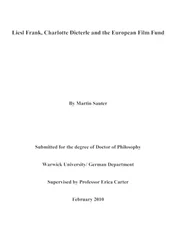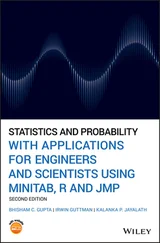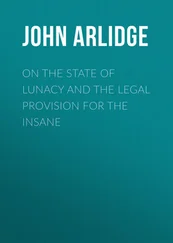Franco Taroni - Statistics and the Evaluation of Evidence for Forensic Scientists
Здесь есть возможность читать онлайн «Franco Taroni - Statistics and the Evaluation of Evidence for Forensic Scientists» — ознакомительный отрывок электронной книги совершенно бесплатно, а после прочтения отрывка купить полную версию. В некоторых случаях можно слушать аудио, скачать через торрент в формате fb2 и присутствует краткое содержание. Жанр: unrecognised, на английском языке. Описание произведения, (предисловие) а так же отзывы посетителей доступны на портале библиотеки ЛибКат.
- Название:Statistics and the Evaluation of Evidence for Forensic Scientists
- Автор:
- Жанр:
- Год:неизвестен
- ISBN:нет данных
- Рейтинг книги:3 / 5. Голосов: 1
-
Избранное:Добавить в избранное
- Отзывы:
-
Ваша оценка:
Statistics and the Evaluation of Evidence for Forensic Scientists: краткое содержание, описание и аннотация
Предлагаем к чтению аннотацию, описание, краткое содержание или предисловие (зависит от того, что написал сам автор книги «Statistics and the Evaluation of Evidence for Forensic Scientists»). Если вы не нашли необходимую информацию о книге — напишите в комментариях, мы постараемся отыскать её.
he leading resource in the statistical evaluation and interpretation of forensic evidence
The third edition of
is fully updated to provide the latest research and developments in the use of statistical techniques to evaluate and interpret evidence. Courts are increasingly aware of the importance of proper evidence assessment when there is an element of uncertainty. Because of the increasing availability of data, the role of statistical and probabilistic reasoning is gaining a higher profile in criminal cases. That’s why lawyers, forensic scientists, graduate students, and researchers will find this book an essential resource, one which explores how forensic evidence can be evaluated and interpreted statistically. It’s written as an accessible source of information for all those with an interest in the evaluation and interpretation of forensic scientific evidence.
Discusses the entire chain of reasoning–from evidence pre-assessment to court presentation; Includes material for the understanding of evidence interpretation for single and multiple trace evidence; Provides real examples and data for improved understanding. Since the first edition of this book was published in 1995, this respected series has remained a leading resource in the statistical evaluation of forensic evidence. It shares knowledge from authors in the fields of statistics and forensic science who are international experts in the area of evidence evaluation and interpretation. This book helps people to deal with uncertainty related to scientific evidence and propositions. It introduces a method of reasoning that shows how to update beliefs coherently and to act rationally. In this edition, readers can find new information on the topics of elicitation, subjective probabilities, decision analysis, and cognitive bias, all discussed in a Bayesian framework.
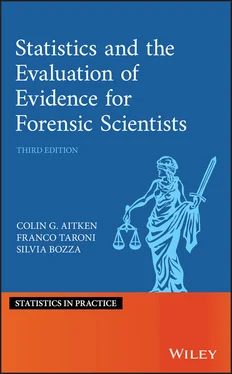
 occurs if there are no black balls in the urn, and it is, therefore, impossible to draw a black ball from the urn. The probability of obtaining a black ball on a single random drawing from the urn is zero. A value of
occurs if there are no black balls in the urn, and it is, therefore, impossible to draw a black ball from the urn. The probability of obtaining a black ball on a single random drawing from the urn is zero. A value of  occurs if all the balls in the urn are black. It is certain that a ball drawn at random from the urn will be black. The probability of obtaining a black ball on a single random drawing from the urn is one. All values between these extremes of 0 and 1 are possible (by considering very large urns containing very large numbers of balls).
occurs if all the balls in the urn are black. It is certain that a ball drawn at random from the urn will be black. The probability of obtaining a black ball on a single random drawing from the urn is one. All values between these extremes of 0 and 1 are possible (by considering very large urns containing very large numbers of balls). is the selection of a black ball. Each ball has an equal chance of being selected. The colours black and white of the balls are in the proportions
is the selection of a black ball. Each ball has an equal chance of being selected. The colours black and white of the balls are in the proportions  and
and  , respectively. The proportion,
, respectively. The proportion,  , of black balls corresponds to the probability that a ball, drawn in the manner described (i.e. at random) from the urn is black. It is then said that the probability a black ball is drawn from the urn, when selection is made at random, is
, of black balls corresponds to the probability that a ball, drawn in the manner described (i.e. at random) from the urn is black. It is then said that the probability a black ball is drawn from the urn, when selection is made at random, is  . Some notation is needed to denote the probability of an event. The probability of
. Some notation is needed to denote the probability of an event. The probability of  , the drawing of a black ball, is denoted
, the drawing of a black ball, is denoted  and similarly
and similarly  denotes the probability of the drawing of a white ball. Then it can be written that
denotes the probability of the drawing of a white ball. Then it can be written that  and
and  . Note that
. Note that
 ] You are invited to compare that event with the standard, adjusting the number of [black] balls in the urn until you have the same beliefs in the event and in the standard. Your probability for the event is then the resulting fraction of [black] balls. (p. 35)
] You are invited to compare that event with the standard, adjusting the number of [black] balls in the urn until you have the same beliefs in the event and in the standard. Your probability for the event is then the resulting fraction of [black] balls. (p. 35) denote the uncertain event that the England football team will win the next major international football championship. Let
denote the uncertain event that the England football team will win the next major international football championship. Let  denote the uncertain event that a black ball will be drawn from the urn. A choice has to be made between
denote the uncertain event that a black ball will be drawn from the urn. A choice has to be made between  and
and  , and this choice has to be ethically neutral. If
, and this choice has to be ethically neutral. If  is chosen and a black ball is drawn from the urn then a prize is won. If
is chosen and a black ball is drawn from the urn then a prize is won. If  is chosen and England do win the championship the same prize is won. The proportion
is chosen and England do win the championship the same prize is won. The proportion  of black balls in the urn is known in advance. Obviously, if
of black balls in the urn is known in advance. Obviously, if  then
then  is the better choice, assuming, of course, that England do have some non‐zero probability of winning the championship. If
is the better choice, assuming, of course, that England do have some non‐zero probability of winning the championship. If  then
then  is the better choice. Somewhere in the interval
is the better choice. Somewhere in the interval  , there is a value of
, there is a value of  ,
,  say, where the choice does not matter to You. You are indifferent as to whether
say, where the choice does not matter to You. You are indifferent as to whether  or
or  is chosen. If
is chosen. If  is chosen
is chosen  . Then it said that
. Then it said that  also. In this way, the uncertainty in relation to any event can be measured by a probability
also. In this way, the uncertainty in relation to any event can be measured by a probability  , where
, where  is the proportion of black balls, which leads to indifference between the two choices, namely, the choice of drawing a black ball from the urn and the choice of the uncertain event in whose probability one is interested.
is the proportion of black balls, which leads to indifference between the two choices, namely, the choice of drawing a black ball from the urn and the choice of the uncertain event in whose probability one is interested.

